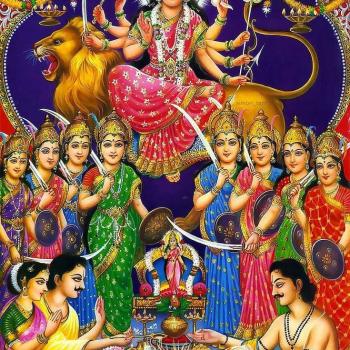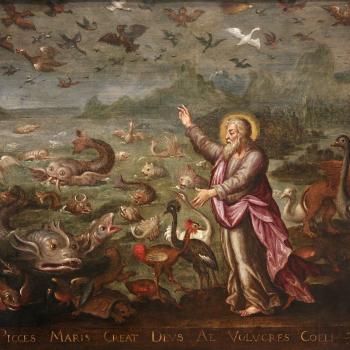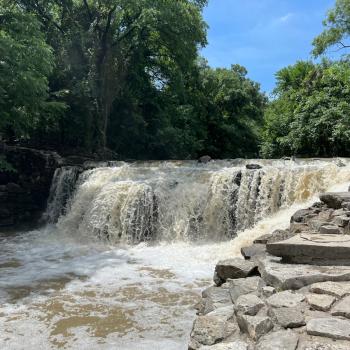On the other hand, drinking blood is expressly forbidden in the Bible (Gen. 9:4-6; Lev. 3:17, 7:10, 14, 26, 19:26; Dt. 12:23-25; Acts 15:20). This is because the life-blood belongs to God and is to be given to him in temple sacrificial rituals. This is done by pouring or sprinkling blood on the ground (Lev. 17:13, Dt. 12:16, 15:23), on people (Ex. 29:21), on the altar (Ex. 29:12; Lev. 4:7, 18, 25, 30, 34, 5:9, 8:15, 30; 9:9, Num. 18:17; Dt. 12:27), in the temple or tabernacle (Lev. 14:51; Num 19:4), at the veil of the Holy of Holies (Lev. 4:6, 17, 8:30), and on the Ark within the Holy of Holies (Lev. 16:14-15). The Synoptic Gospels describing the "pouring" (ekchunnō, often "shedding" in English) of Christ's blood at the Last Supper using the Septuagint Greek root, which describes these temple blood-pouring rituals. This poured blood also purifies, and was used in purification rituals of the temple, its furnishing, utensils and priests (Ex. 29:9-12, 30:10; Lev. 8:24, 16:15-16; Ezek. 42:20, 45:18-20).
John specifically notes that Jesus' Bread of Life discourse occurred at Passover time (6:4). Furthermore, John uniquely describes Jesus as the Passover "Lamb of God" (1:29, 36). What precisely happened to the Passover lamb in the first century? As noted earlier, Passover as practiced among first century Jews was a temple pilgrimage that involved sacrificing a lamb, pouring its blood at the altar, and feasting on the lamb's flesh and unleavened bread.
Although we often don't realize it today, one of the most striking characteristics of Passover at the Jerusalem temple in the first century would have been the blood-pouring ritual.
So, strange as it may seem to modern Christians, when Jesus spoke of bread and flesh and blood at Passover time, his original listeners would probably not have thought of a yet to be consummated eucharistic Last Supper, but of the unleavened bread, the sacrificial flesh of lambs, and blood-pouring rituals at the altar of the temple.
The Reaction of the Disciples (6:60-66)
From the perspective of first century Jews with no background in eucharistic theology, the words of Jesus would have been shocking, which is exactly what John reports. Their response was: "This is a hard saying; who can listen to it?" (6:60). It is important to note that this was the response of Jesus' disciples, not his opponents. Jesus replied, "It is the Spirit who gives life; the flesh is no help at all. The words that I have spoken to you are spirit and life" (6:63). In other words, he is not speaking literally, but "spiritually" or allegorically. Nonetheless, "many of his disciples turned back and no longer walked with him" (6:66). John implies that Judas Iscariot was one of these disciples who took offense (6:64, 71); although he remained a disciple for the time being, this discourse was the beginning of Judas's eventual disaffection.
The Reaction of the Twelve (6:67-71)
The rest of the Twelve, on the other hand, remain faithful. Their response to these "hard sayings" is reflected in the words of Peter, "Lord, to whom shall we go? You have the words of eternal life" (6:68). The term apostle never occurs in John; rather, Jesus' closest followers are consistently called disciples. There were nonetheless special disciples, whom Jesus called the Twelve (Jn. 6:67, 70, 20:24), who were the same group called the twelve apostles in the Synoptic Gospels (Mt. 10:2; Mk. 6:30; Lk. 6:13). It is possible that Jesus did not yet call the disciples apostles (apostolos = "one who is sent") because they were not formally sent forth as Jesus' representatives until after Jesus' prayer in John 17:18, when he sends (apostellō, the verbal form) them into the world. That is, at this point they are only disciples who are still studying and learning with their teacher; only after the resurrection will they be sent forth as Jesus' apostles to spread his teachings to the world.





